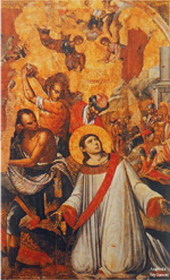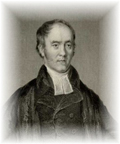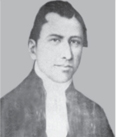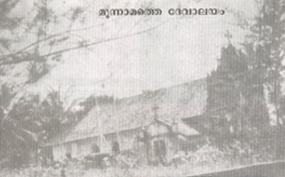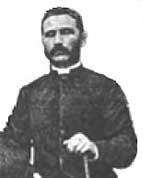A Look Back
History“The history of Mundiappally CSI Church is ‘the history of miracles’. It was a growth from nothingness to abundance.”
Christianity in Kerala
The most commonly believed tradition of origin among Christians in Kerala relates to the evangelical activity of Thomas the Apostle, who is said to have come to India in middle of the 1st century (AD 52). In Kerala, the people who were converted to Christianity by St. Thomas Apostle in 52 AD were known to be ‘Nasranis’. As years went on, there occurred many changes in the life, rituals and faith of these ‘Nasranis’. During the domination of the Portuguese, a group of ‘Nasranis’ became Catholics and accepted the Pope. But another group of ‘Nasranis’ were not interested in this relationship with Catholics and so with the ‘Kunan Kurisu Sathyam’ they terminated all the relationship with Catholic Church and the Portuguese. This group of ‘Nasranis’ joined with the Patriarch of Antioch and followed the faith and rituals of Syrian Church. This group of church was later called to be the ‘Malankara Church’ by the historians.
Missionary Movement
In 1806, during the British domination, as per the instruction of the Governor of Madras, Rev. Dr. Kere and Rev. Dr. Claudius Buchanan visited Kerala. They visited the then Christian churches and submitted an elaborate report to the CMS Missionary Group in London. The Colonel Macauley was the then Resident of Kerala. Rev. Dr. Buchanan in his meeting with the then Metropolitan of Malankara, Mar Dionysus-I decided that the Anglican Church and the Malankara Church to work together. As a result, under the leadership of Rev. Dr. Buchanan attempts were started to translate Bible into Malayalam. A group of Syrian and Tamil scholars were part of the translation. They translated the four Gospels and was printed and published in 1811 at Courier press Bombay.
As a result of the correspondence made by Colonel Macauley and Buchanan Church Mission Society (CMS) decided to send their Missionaries to Kerala. After Colonel Macauley, Colonel Munro was appointed as the Resident of Travancore and Kochi. By his effort Colonel Munro uplifted the social status of ‘Nazaranis’ and the Christians were begun to be appointed in government services with key-posts like Judges, Revenue officers etc. Moreover the ‘Nazaranis’ who were forced to labour in the temples (‘oozhiyam’) were banned. As the priests in those days were less educated, CMS decided to start a Seminary at Kottayam, which now known as the Pazhaya Seminary (Old Seminary near Chungam).
Rev. Thomas Norton arrived at Alappuzha on 8th May 1816. The missionaries came to Kerala as the teachers at the Seminary and to support the Malankara Church (Sahaya Mission). Rev. Benjamin Bailey and his family reached Alappuzha on 19 November 1816. Rev. Bailey started the first printing press at Kottayam – the CMS Press- in1821. By 1829, Rev. Bailey translated the four Gospels and The Acts of Apostles’, printed it at CMS press and published. In 1839 the first four books of Moses were translated to Malayalam and published. In 1841 Rev. Bailey translated the Bible and published the ‘First Complete Malayalam Bible’. The first college in Kerala – the CMS College – was started by Rev. Bailey in 1817. Later many dedicated Missionaries like Rev. Joseph Fen, Rev. Henry Baker, Rev. Joseph Peet came to Kerala and started many educational institutions which led to the social and educational reformations in Kerala.
The superstitious beliefs and certain rituals that existed in the Malankara church saddened the Missionaries. Despite their sincere efforts for the development of the Christians in Kerala, the Missionaries were disappointed at this. Theological differences came to the surface and after the Malankara Church Synod held at Mavelikara on 16th January 1836, there was a clear rift between the Missionaries and the Malankara Church. The Missionaries decided to stop their support to the Malankara church. After that they started independent evangelism in Kerala and started Anglican Churches in Travancore. A large group of Syrian Christians and priests joined the missionaries and the missionaries diverted their work among the Hindus.
In Central Travancore, the CMS Missionaries led the Missionary works, in South Travancore it was led by the LMS Missionaries and in Malabar by the BEM Missionaries. This led to a tremendous change and development in the social, cultural and educational scenario of Kerala. The Missionaries established schools for the marginalised and the depressed sections of the society who were denied the right to use public spaces. They initiated the development of Malayalam language by preparing a Grammar Book for Malayalam and established printing Presses.
The Light of Reformation at Mundiappally
Under the leadership of the Syrian Christians who worked jointly with the Missionaries established Anglican Churches in places like Mallappally. By the efforts of the Western Missionaries who worked at Tholassery and Mavelikara, many churches were established. It was during this time an Anglican Church was established at Kallunkal, Kaviyoor (on the left side of the road that lead to the east from Njalbhagam junction).Most the people who worked with the Anglican Missionaries reside at Kaniyampara, so the church at Kallunkal was shifted to Kaniyampara.
During this time, attracted by the reformation of the Missionaries, the Family Heads of ten houses belonging to the four families viz Thazhikayil, Thypparambil, Panamkulathu and Thuruthumala who were members of the Kallooppara St. Mary’s Syrian Jacobite Church met the Missionary at Tholassery, Rev. W. Johnson and convinced him of the need for establishing a church at Mundiappally. They also requested the Missionary to appoint a pastor to lead the worship. The efforts of the forefathers and the initiative of the Missionary Rev. W. Johnson led to the establishment of Anglican Church at Mundiappally which was consecrated in the name of the ‘First Martyr of the Church – St. Stephen’. Thus the St. Stephen’s CSI Church was established in the year 1867 which in course of time became the present Church.
The First Church
The first church was a thatched shed in the present ‘Paradiyil Purayidom’, west of the present cemetery and PWD Road. That church was destroyed by the then influential Hindu families.
The Second Church
The second church was built in the ‘Melekunnathu Purayidom’ bought from the Panamkulathu family. That was also a small shed. About that church, Archdeacon Caley in his letter to the CMS remarked, “They have a small church but neither so large nor so good as it might have been.” For about 46 years worship continued in this shed.
Pastorate Formation
The St. Stephen’s CSI Church established in 1867 was the outstation of CSI Christ Church, Kaviyoor. Our forefathers felt the need for making our church a pastorate and initiated steps for the same. During this period Rt. Rev. Dr. C.K. Jacob was ordained as the first native Bishop (‘Nattu Bishop’) of Travancore-Kochi Anglican Diocese in 1945. It was also during this time that the different denominations viz Anglican, Methodist and Presbyterian working, united to form Church of South India (CSI) on 27th September 1947. Rt. Rev. Dr. C.K. Jacob was the presiding Bishop during the announcement of CSI Church and he was the first deputy moderator of Church of South India.That day is described as the ‘Second Pentecost’ by Historians. That was not the day of establishment of a new church, but a day of union. The churches in the union had heritage of centuries.
Later when Dioceses were reorganized churches from Enathu (near Adoor) to Perumbavoor constituted the Central Travancore CSI Diocese (Later Madhya Kerala). Hence our church too belonged to the Madhya Kerala Diocese. Two years after the constitution of Central Travancore Diocese our Church was declared as a pastorate in 1949. The outstations of Kaviyoor pastorate viz. Kaniyampara and Warikad remained as the outstations of Kaviyoor CSI Church and the other outstations viz. Elavinal, Parady, Mudukottal and Kalloppara were joined as the outstations of Mundiappally CSI Church.
The Present Church
1967 was the Centenary year of our church and Rev. P.D. John was the then vicar(1963 – 1967) .The parish decided to celebrate it and construct a Parish Hall to commemorate the centenary year. Very. Rev. M.K. George, who took charge in 1967, initiated the construction of the Parish Hall. A centenary Hall was built in memory of Rev. M.V. Pothen, who served the parish as church worker and headmaster of the local L.P. School for a long time and pastor of the Mundiappally pastorate from 1950 – 1954. Rt. Rev. Dr. M.M. John laid the foundation stone on 26th December 1966 and he himself dedicated the hall on 26th December 1967. The active leadership of George Achen led the Parish to prosperity. The foundation stone of the new church was laid on 26th December 1968 and completed it within one year. On 26th December 1969, the new church was dedicated for worship.Rt. Rev. Dr. M.M. John assisted by Rt. Rev. T.S. Joseph conducted the dedication service. The present Church was renovated during the period of Rev. George Cherian. The Altar was reconstructed and the rest was renovated. The construction was started when Rev. Jacob T. Abraham was the pastor. It was completed during the time of Rev. George Cherian. The bell tower also was erected at that time and the church premises were beautified.
The history of Mundiappally CSI Church is ‘the history of miracles’. It was a growth from nothingness to abundance. It was a progress.
From a note by Archdeacon Caley to CMS dated December 1904.
“Mundiappally was commenced in 1867 by the Rev. W. Johnson and has a congregation of 201 baptized Christians. They have a small church, but neither so large nor so good as it might have been.”


